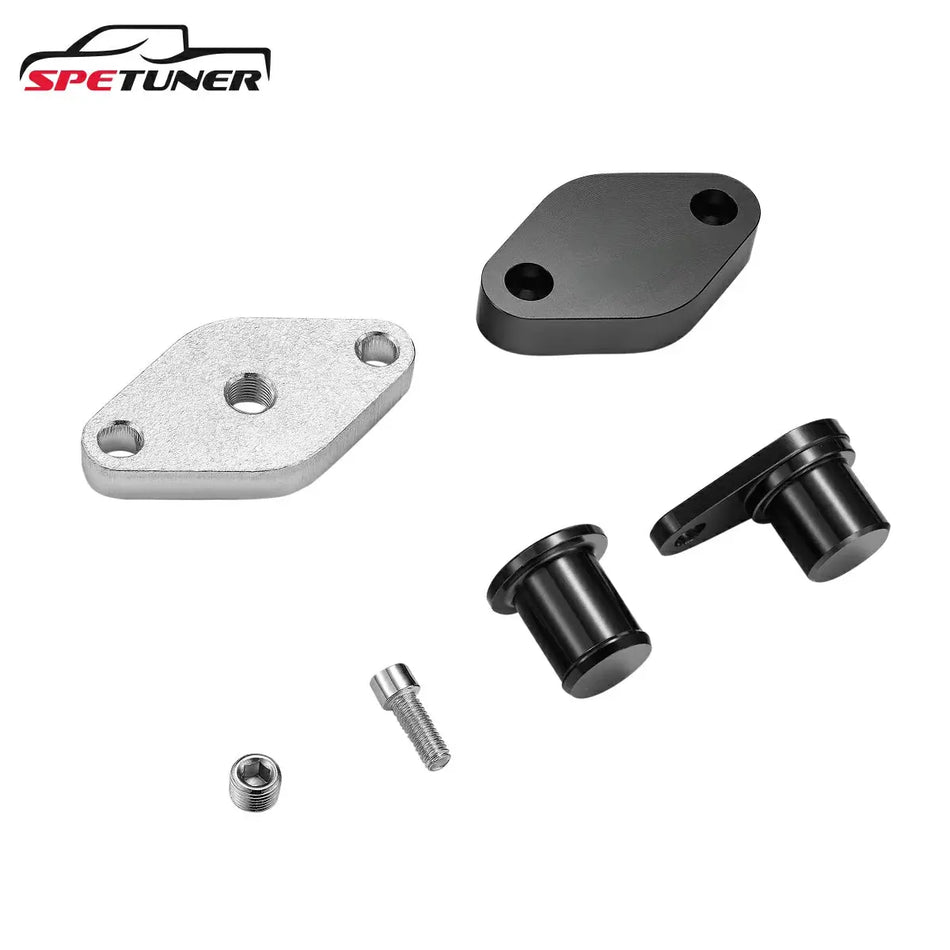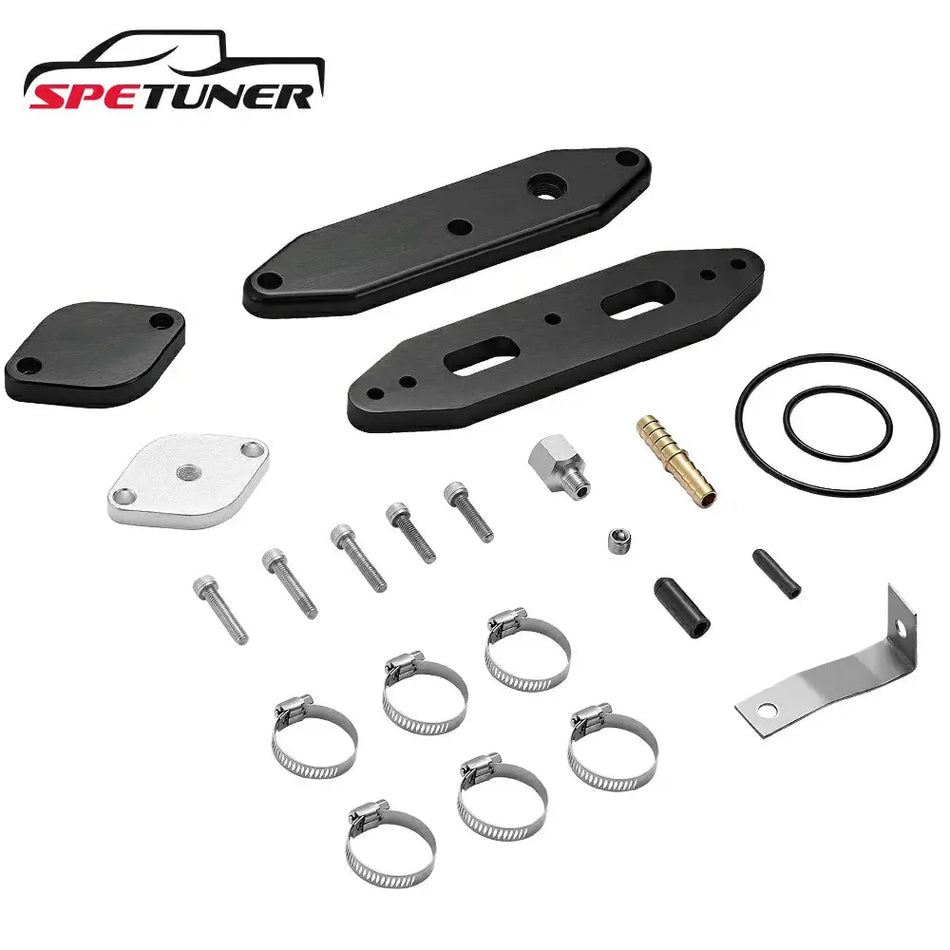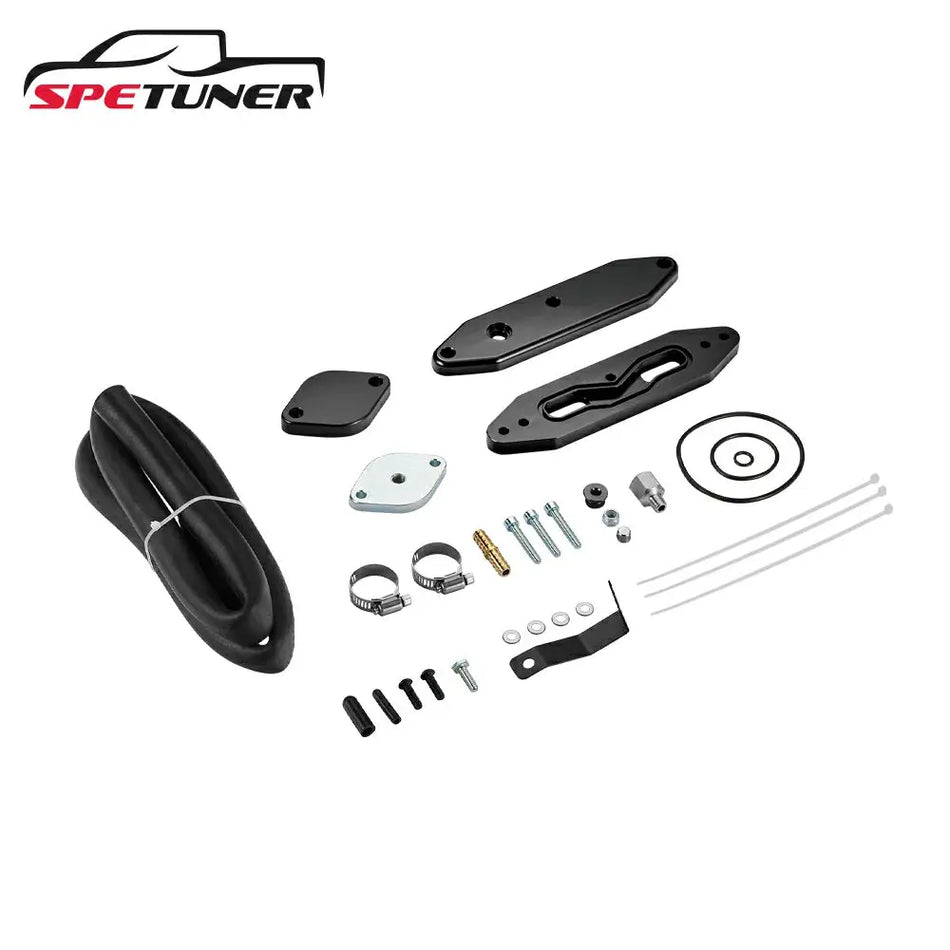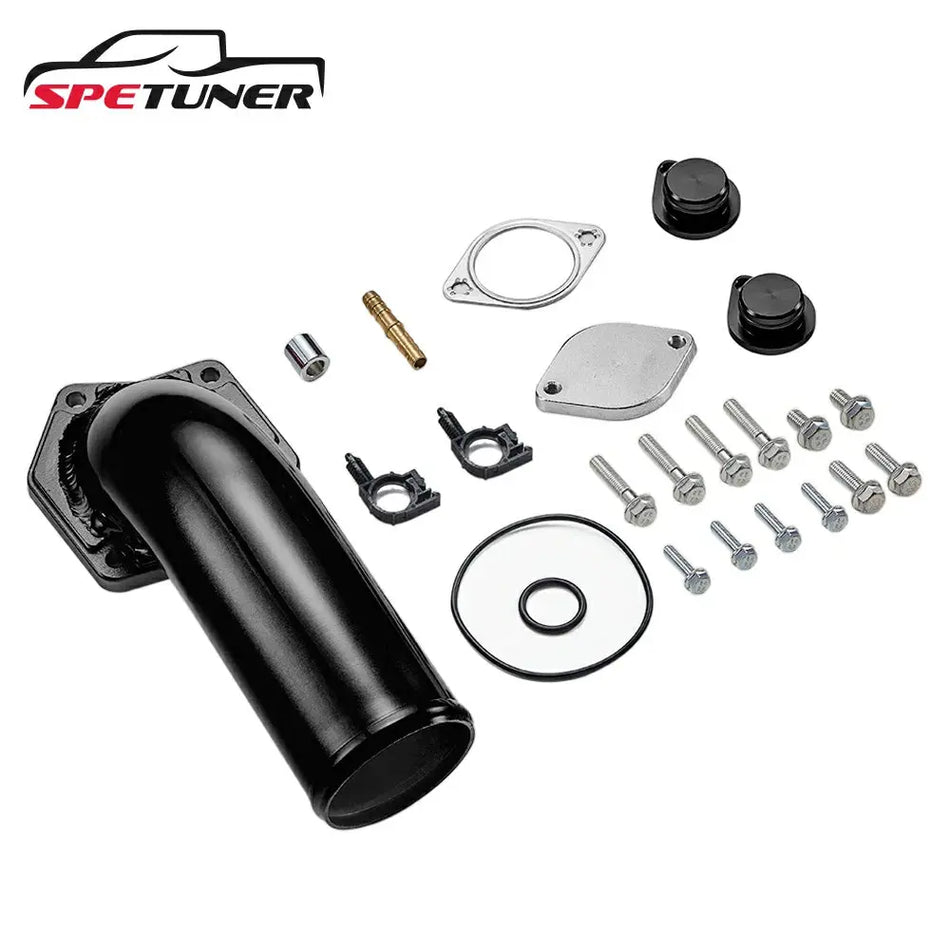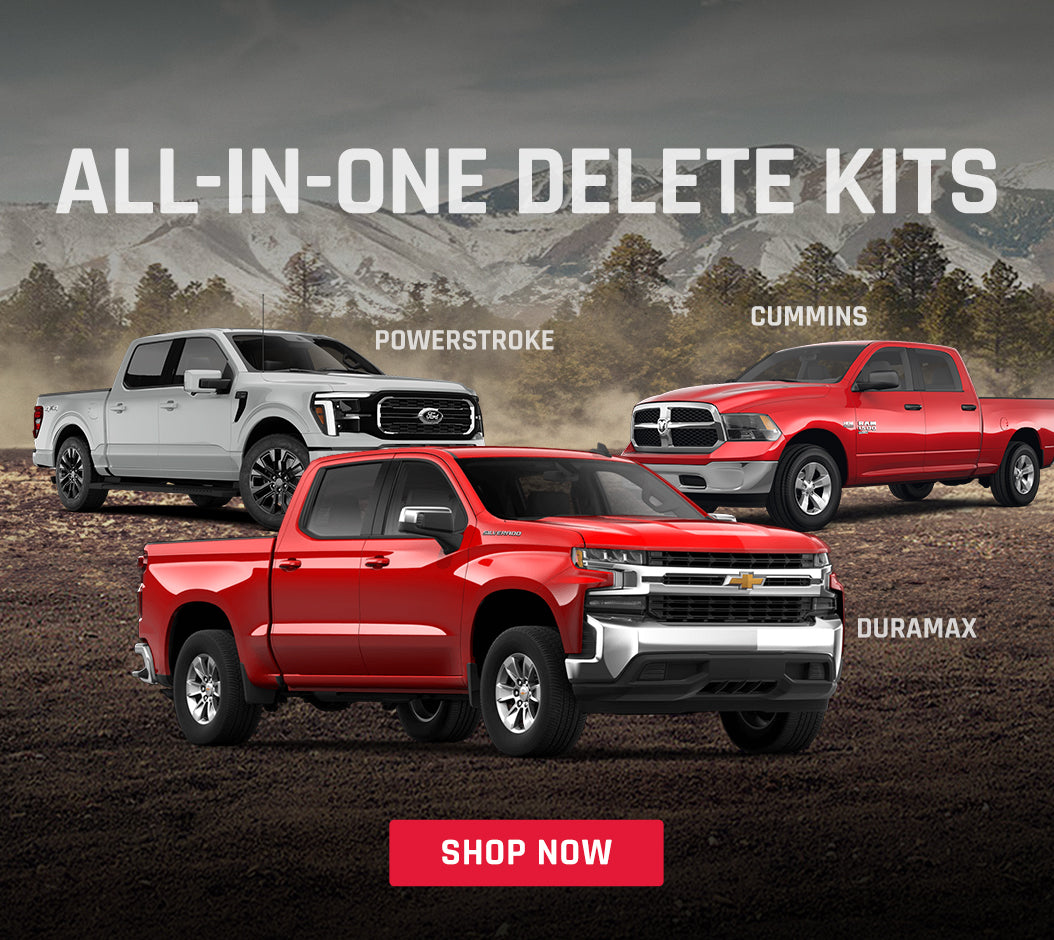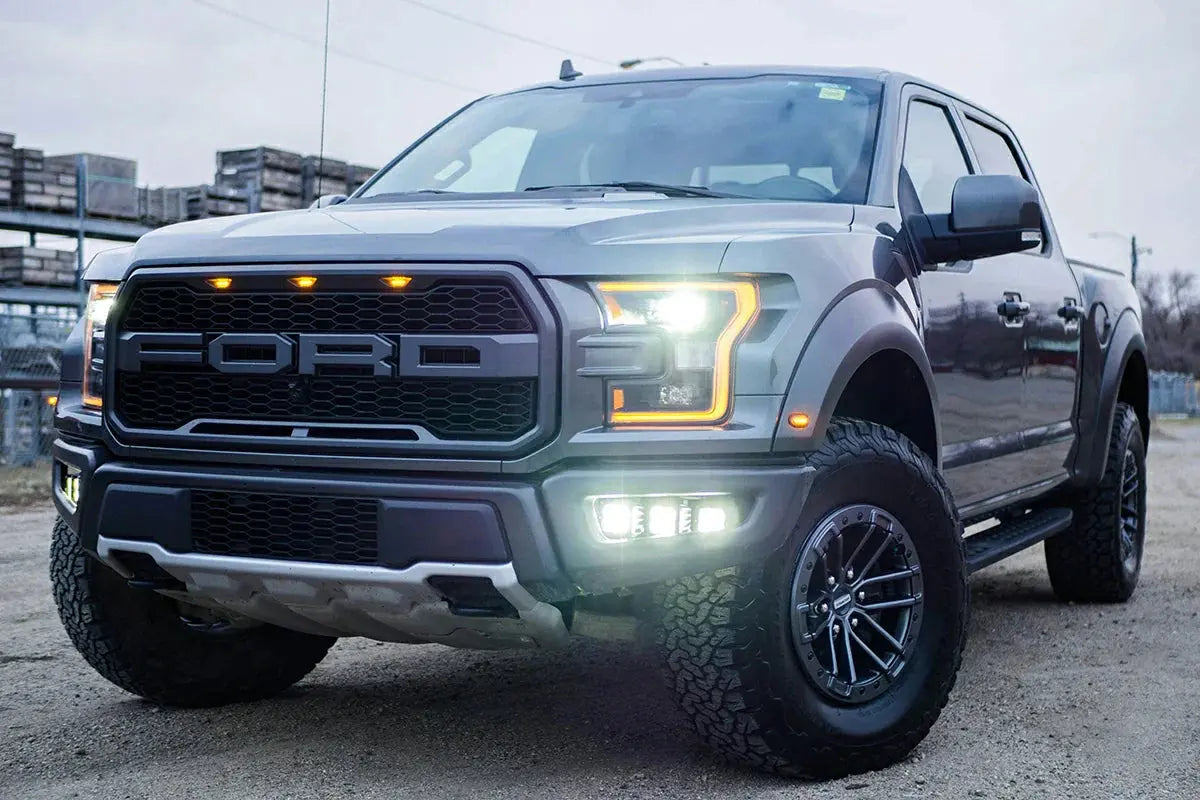When tuning and upgrading your 2017–2023 L5P Duramax engine, one of the biggest decisions you’ll face is whether to go with a full emissions delete or stick with an emissions-intact build. This decision affects everything — power, fuel economy, legal compliance, and long-term reliability.
The L5P Duramax is known for its incredible towing capabilities and impressive output, but like any modern diesel, it comes with tradeoffs related to its emissions equipment. In this article, we compare both routes head-to-head to help you choose the best path for your build goals, budget, and usage scenario.
1. Power & Performance: Delete vs Intact
| Feature | Emissions Intact | Emissions Deleted |
|---|---|---|
| Peak Horsepower | 600–630 HP (with tuning) | 600–700+ HP (race-only tuning) |
| Turbo Response | Slight lag due to EGR/DPF | Sharper, faster spool-up |
| Performance Mods | CARB-safe intake, tuning, turbo | Full L5P Duramax delete kit, race tune, exhaust system |
Verdict: Delete kits unlock maximum power, ideal for track, pulling, or off-road builds. Emissions-safe builds still deliver strong performance for street and towing use. Whether you're chasing moderate towing strength or extreme L5P Duramax horsepower, both builds can get the job done.

2. Fuel Economy & Heat Management
| Feature | Emissions Intact | Emissions Deleted |
|---|---|---|
| MPG Potential | Steady with proper tuning | Up to 15% improvement (with tuning) |
| Exhaust Temps (EGTs) | Higher under load | Lower, cooler-running engine |
Verdict: A properly tuned delete build improves combustion efficiency and EGTs. But without tuning, fuel gains are unlikely.
3. Reliability & Maintenance: Which Lasts Longer?
| Feature | Emissions Intact | Emissions Deleted |
|---|---|---|
| Maintenance Frequency | Regular regen cycles, DEF refills | Fewer emissions-related failures |
| Common Failures | EGR cooler, DPF clog, DEF pump | Tuning issues, software updates |
Some of the most common L5P Duramax problems include carbon buildup in the EGR cooler, DPF regeneration issues, and DEF system malfunctions. Deleting these components can eliminate frequent service needs, but introduces tuning dependency.
Verdict: Deleting reduces failure points, but depends on stable custom tuning. Emissions-safe setups are more predictable for daily users.

4. Legal Compliance: Road vs Off-Road
| Feature | Emissions Intact | Emissions Deleted |
|---|---|---|
| Highway Legal? | ✅ Yes (EPA/state compliant) | ❌ No (off-road only) |
| Legal Risk | None | Subject to fines, impoundment, or registration loss |
Verdict: Only emissions-intact builds are legal for public roads. Delete kits are for off-road, racing, or agricultural use only.
5. Resale & Value Retention
| Feature | Emissions Intact | Emissions Deleted |
|---|---|---|
| Dealer Resale | Allowed | Not accepted by most dealers |
| Buyer Confidence | Higher (no modifications) | Limited (niche buyers only) |
Verdict: Planning to sell or trade in? Emissions-intact is the smart move. Delete builds appeal only to a niche audience.
SPETUNER's Take: Two Builds, One Goal — Better Performance
| Build Style | Best For | Suggested Setup |
|---|---|---|
| Emissions Intact | Street, towing, compliance | Emissions-safe tuning, CARB upgrades |
| Delete Kit (Off-Road) | Track, trail, high-performance use | L5P Duramax delete kit + custom race tuning |
Whether you’re building a workhorse or a weekend warrior, SPETUNER gives you options. Our kits, parts, and expertise support both paths, all backed by real-world results and unmatched customer support.

⚙️ Need Help? Let’s Build Your Ideal L5P
Not sure which path fits your truck and goals? Let our diesel experts guide you. From emissions-safe builds to full off-road delete kits, SPETUNER is your performance partner.
Contact Us and take control of your L5P Duramax’s future.
👉Before you decide, compare brands and inclusions in our best L5P delete kit guide.
FAQs
Q1: What is an L5P Duramax engine?
A1: The L5P Duramax is a 6.6L V8 turbo-diesel engine introduced in 2017 for GMC and Chevrolet HD trucks. It delivers high torque, strong towing capacity, and is known for durability and tuning potential.
Q2: Should I delete my L5P Duramax's emissions system?
A2: Deleting emissions components like the DPF, DEF, and EGR can increase horsepower and reduce maintenance, but it's only legal for off-road use and may void warranties or limit resale options.
Q3: What is included in an L5P Duramax delete kit?
A3: A complete delete kit typically includes DPF and DEF delete components, EGR block-off plates, tuning software or devices, and optional exhaust systems to improve flow and performance.
Q4: Is deleting my L5P Duramax legal?
A4: No. Emissions deletes are not legal for public road use in the U.S. and Canada. They are intended for competition, farm, or off-road use only and may result in fines or vehicle impoundment if used on-road.
Q5: How much horsepower can an L5P Duramax make?
A5: With emissions intact and proper tuning, L5P Duramax trucks can achieve 600–630 HP. With a full delete and aggressive tuning, some builds can exceed 700 HP for race applications.
Q6: Will deleting my L5P improve fuel economy?
A6: Possibly. When properly tuned, a deleted L5P Duramax can see up to 15% better fuel economy due to reduced backpressure and lower exhaust gas temperatures. Poor tuning may offset these gains.
Q7: What are common L5P Duramax problems?
A7: Issues include EGR cooler leaks, DPF clogs, DEF pump failures, and NOx sensor faults. Deleting emissions systems can reduce these problems but adds reliance on custom tuning support.
Q8: Will a deleted L5P Duramax affect resale value?
A8: Yes. Deleted trucks often can't be traded in at dealers and may deter buyers due to legality concerns. Emissions-intact trucks typically retain higher resale value and broader market appeal.
Q9: Can I legally modify my L5P Duramax for better performance?
A9: Yes. There are emissions-compliant performance parts like cold air intakes, CARB-approved tuners, and turbo upgrades that provide power gains while keeping your truck road legal.
Q10: Who should consider a delete kit for their L5P?
A10: Delete kits are best suited for owners who use their trucks strictly for off-road, race, or agricultural purposes. If you drive on public roads, emissions-safe upgrades are the better legal choice.


